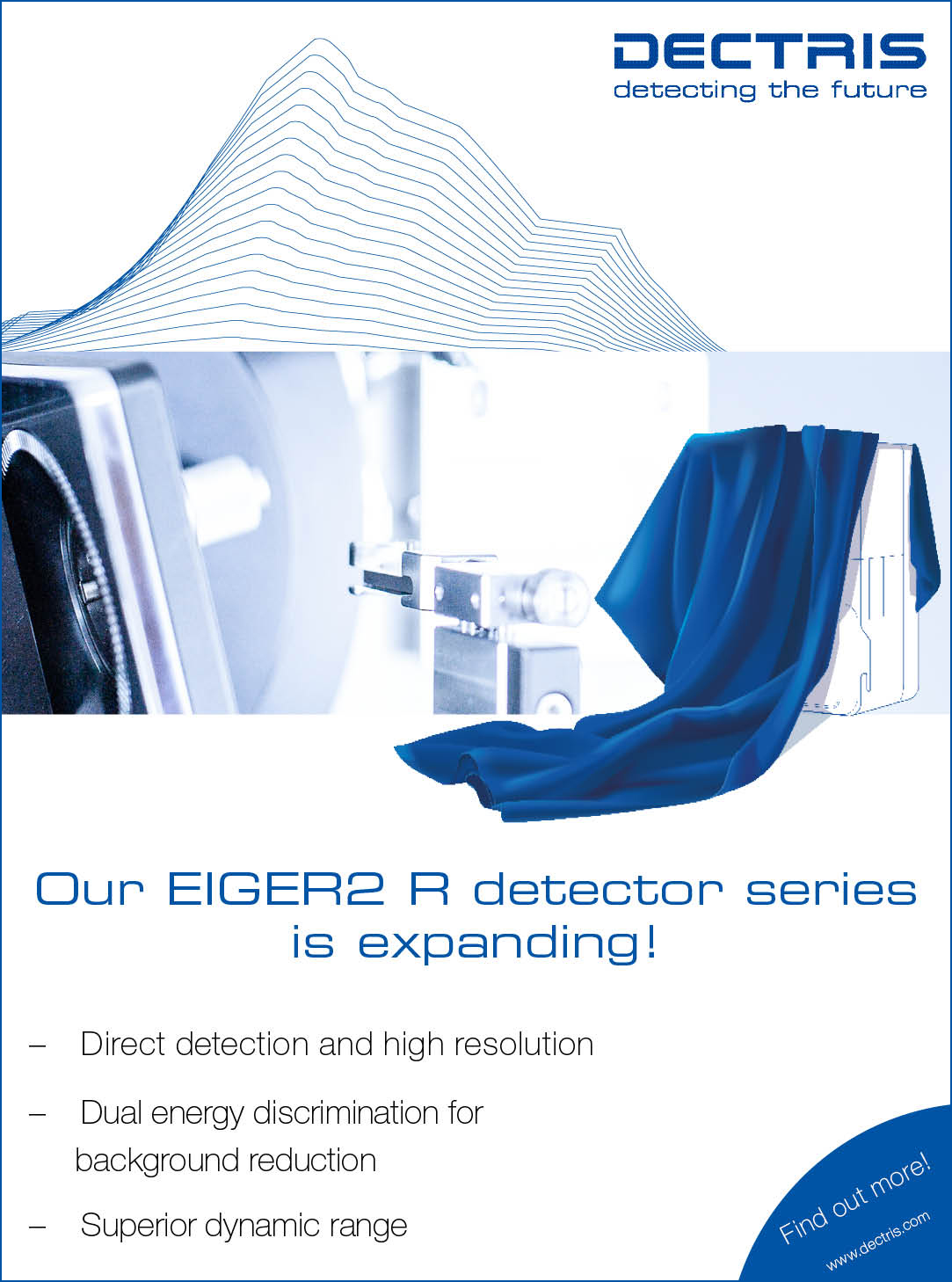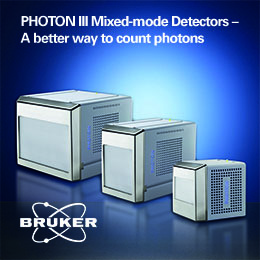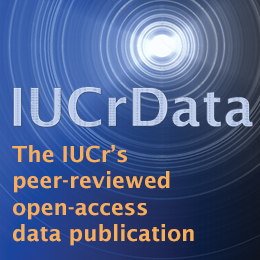
Feature article
Quantum mechanics and crystallography: inextricably linked in quantum crystallography
![Thumbnail [Thumbnail]](https://www.iucr.org/__data/assets/image/0014/151052/quantum_gif.gif)
In recent years, the name quantum crystallography has suddenly entered the scientific jargon. It primarily deals with the application of quantum theory in crystallography, a connection that requires a historical review to be fully appreciated. In fact, the symbiosis between quantum physics and crystallography should not surprise us because the two fields have been tightly entangled since the first applications of X-ray diffraction from crystals that were contemporary with the coming of the quantum age.
Many crystallographers probably ignore the fact that W. L. Bragg gave the inaugural talk at what is remembered as the most famous conference in the history of science, the Solvay Conference on Electrons and Photons (1927), a meeting where the theoretical framework of quantum mechanics was eventually established, merging points of view from different schools of thought. Bragg attended the congress because the development of the X-ray diffraction technique had attracted the particular attention of the quantum physicists, eager to find experimental evidence for the electronic structures of atoms. As a reminder, in 1913, the atomic model in vogue was the incorrect Bohr atom, while physicists were in search for an advanced model complying with the growing complexity of quantum theory. Soon after the first X-ray diffraction experiments were reported, P. Debye wrote: "It seems to me that the experimental study of the scattered radiation, in particular from light atoms, should get more attention, since along this way it should be possible to determine the arrangement of the electrons in the atoms" (Debye, 1915). At the same time, Compton (1915) wrote that "It is hoped that it will be possible in this manner [through X-ray diffraction] to obtain more definite information concerning the distribution of the electrons in the atoms." Thus, it was not unexpected that, close to the fathers of quantum theory (like Bohr, Born, Curie, Dirac, Einstein, Heisenberg, Pauli, Planck and Schrödinger), at the Solvay Conference sat a number of crystallographers, like Bragg, Brillouin, Compton, Debye and de Broglie. The last was sceptical in defining himself as a crystallographer. Still, he actually used crystals to prove the wave nature of electrons, although crystallographers normally use radiation to reveal the inner nature of crystals. Thus, de Broglie definitely deserves to be considered as a crystallographer and indeed a quantum crystallographer. I take the occasion in this article to request that also Compton be included in the IUCr website list of crystallographers who won the Nobel Prize, because he is, surprisingly, excluded. [Note from the IUCr: we thank the author for bringing this omission to our attention; this has now been rectified: https://www.iucr.org/people/nobel-prize.] Compton contributed enormously to the Solvay Conference's success and was probably the most representative scientist linking the worlds of quantum mechanics and crystallography. In his book X-Rays and Electrons, Compton (1926) proposed the first comprehensive quantum theory of X-ray scattering, and Compton scattering is at the heart of electron-density determination in momentum space.
![[Solvay 1927]](https://www.iucr.org/__data/assets/image/0013/151240/Solvay1927.png) Participants at the 1927 Solvay Conference. Photo: Wikimedia Commons.
Participants at the 1927 Solvay Conference. Photo: Wikimedia Commons.
Conversely, the new crystallography (the one born after the development and application of the X-ray diffraction technique) took enormous advantage of the models derived from quantum mechanics. The above-mentioned quantum theory of scattering is the paradigm to interpret the X-ray intensities and provides the key to opening the lock of crystal-structure solution. In fact, once the correct atomic model was eventually developed, quantum chemical calculations provided accurate atomic form factors, those that are used daily for crystal-structure determinations and refinements.
The period 1913–1930 witnessed the beginning of what I called the connubium between crystallography and quantum mechanics in a recent review article (Macchi, 2020). The empathy between scientists of the two communities is the beginning of a huge array of fundamental studies. In fact, Debye and Compton's premonitory statements implied that through X-ray diffraction, we could detail electrons' behaviour in matter, not just the electronic structure of atoms. This means revealing the electron distribution in molecules, polymers, salts, etc. However, a realization of this purpose was not possible, at least until accurate data and appropriate models became available. In the early days of X-ray crystallography, one seminal exception was the study by W. H. Bragg on diamond (Bragg, 1921), who revealed the occurrence of scattered intensity for a symmetry-forbidden reflection, the famous 222 reflection. Although it is likely that Bragg mainly measured multiple scattering intensity (Coppens, 1997), his observation was anyway correct. It proved that atoms are not spherical inside a crystal, especially if linked to other atoms through covalent bonds. This was probably the first example of a crystallographic investigation on the nature of a chemical bond.
For many years, however, it was impossible to go much beyond this empirical evidence that chemical bonds, which are not quantum mechanical observables, leave measurable fingerprints in the electron-density distribution and, correspondingly, in X-ray diffraction. A breakthrough occurred in the late 1950s, when R. J. Weiss determined the electronic configuration of some metals through X-ray diffraction (Weiss & De Marco, 1958), a quite complicated task and challenging still today. In fact, the deviations from the conditions of validity of the kinematic approximation of X-ray diffraction (quite common for almost perfect crystals) were a significant issue, as admitted by Weiss in his autobiography (Weiss, 2007). Nevertheless, the attempt to break down the atomic scattering into orbital contributions and test different electronic populations for each shell was a terrific breakthrough that eventually gave rise to the field of X-ray charge-density analysis (for a comprehensive review, see Tsirelson & Ozerov, 1996; Coppens, 1997).
![[Fig. 1]](https://www.iucr.org/__data/assets/image/0015/151053/Figure.png) Figure 1. Oxalic acid dihydrate in quantum crystallographic studies over the years. (a) The experimental X–N deformation density map obtained by using the X-ray diffraction structure factors and subtracting the structure factors computed with the independent-atom model from the geometry determined by neutron diffraction (plot modified from Coppens & Sabine, 1969); (b) the deformation density map obtained with a multipolar model (from Stevens & Coppens, 1980); (c) the deformation density map obtained from the X-ray restrained Hartree–Fock calculation (Grimwood & Jayatilaka, 2001); (d) the main molecular orbitals calculated with X-ray restrained extremely localized molecular orbitals (modified from Ernst et al., 2020).
Figure 1. Oxalic acid dihydrate in quantum crystallographic studies over the years. (a) The experimental X–N deformation density map obtained by using the X-ray diffraction structure factors and subtracting the structure factors computed with the independent-atom model from the geometry determined by neutron diffraction (plot modified from Coppens & Sabine, 1969); (b) the deformation density map obtained with a multipolar model (from Stevens & Coppens, 1980); (c) the deformation density map obtained from the X-ray restrained Hartree–Fock calculation (Grimwood & Jayatilaka, 2001); (d) the main molecular orbitals calculated with X-ray restrained extremely localized molecular orbitals (modified from Ernst et al., 2020).
An even bigger challenge launched by Weiss was the possibility to calculate a wavefunction using X-ray diffraction, combining the elastic Bragg and the inelastic Compton scattering. In his book X-ray Determination of Electron Density Distributions, Weiss (1966) proposed to use X-ray diffraction to correct wavefunctions calculated at the Hartree–Fock level, a method that ignores the correlation between electrons. The intuition by Weiss corresponds to a kind of perturbative method, where the wavefunction, calculated from first principles, is a zero-order approximation. In contrast, the X-ray diffraction measurement is the perturbation that enables corrections for the electron-correlation effects. Weiss's suggestion stimulated the work of many scientists in the following decade. However, a determination of the wavefunction coefficients directly from X-ray intensities was very complicated (Coppens et al., 1970; Bentley & Stewart, 1973; Stewart et al., 1975). Even more complicated was the determination of the electron-density matrix elements, as attempted by Clinton and coworkers (Clinton et al., 1969; Clinton & Massa, 1972; Clinton et al., 1973).
Instead, Stewart, Coppens, Hirshfeld, Kurki-Suonio and their co-workers tackled the difficult task of refining wavefunction coefficients from X-ray diffraction and developed simplified models, like the popular multipolar model (Hansen & Coppens, 1978), which followed from the original work by a famous quantum chemist, Roy McWeeny (1951, 1952, 1953, 1954) who first proposed aspherical atomic scattering factors. The multipolar model maintains some features of the independent atom model, which is the standard model adopted for conventional crystal-structure solutions and refinements. These common characteristics are as follows: the electron density is expanded as a sum of atomic terms; the thermal motion is simulated with independent atomic oscillators; the atomic electron densities are assigned to the atomic thermal parameters and are constant along with the nuclear displacements. However, the multipolar model introduces important corrections and extensions: the atomic electron densities are no longer spherical; the atoms are not necessarily neutral; the atomic electron density shells are free to expand or contract. The conceptual similarity with the traditional model attracted the interest of many crystallographers, who established a lively charge-density community, closely related to the community interested in spin electron-density distribution (typically obtained with polarized neutron-scattering experiments) and electron density in momentum space (obtained from Compton scattering experiments).
The idea to calculate a wavefunction based on X-ray diffraction intensities was not abandoned and significant research involved J. Karle (Nobel Prize for the introduction of direct methods into crystallography) and L. J. Massa (Massa et al., 1995). In this respect, another important breakthrough occurred when Jayatilaka (1998) proposed a method to restrain the theoretical wavefunction, calculated with traditional quantum-mechanical methods, to the measured X-ray diffraction intensities. Jayatilaka's approach followed a prescription by Mukherji and Karplus (1963), who proposed to calculate molecular wavefunctions constrained to some experimental data like the dipole moment measured in some spectroscopic experiments. This strategy was perfect for testing the validity of the earlier proposal by Weiss if the observations to use as constraints or restraints for the calculations are the X-ray diffracted intensities. Several emerging methods were proposed after this significant breakthrough, like the X-ray restrained extremely localized molecular orbital method (Genoni, 2013) or the relativistic X-ray restrained wavefunction approach (Bučinský et al., 2019). The quite popular Hirshfeld atom refinement (HAR; Jayatilaka & Dittrich, 2008) also derives from this stream of research, although there is no direct restraint on the theoretically calculated wavefunction to the measured X-ray diffraction intensities. HAR is also an extension of another branch of research that uses predetermined aspherical form factors, stored in databanks from experimental measurements (Domagala et al., 2012), from theoretical calculations (Dominiak et al., 2007; Kumar et al., 2014) or calculated ad hoc (Dittrich et al., 2006). In HAR, the main improvement with respect to database approaches is the recursive nature of the calculation, which is reiterated at each cycle of the structural refinement.
Despite the growing interest in wavefunction-based approaches, the multipolar model has not lost its appeal and was recently used for the combined refinement of charge and spin electron densities, a work pioneered by Becker & Coppens (1985) and improved by Deutsche et al. (2012, 2014), or to describe core deformations (Fischer et al., 2011).
Quantum crystallographic approaches develop at a rapid pace and one can envisage progresses correlated with electron diffraction (Gruza et al., 2020), with spectroscopic techniques (like NMR, see for example Macchi et al., 2017) and with surface microscopies (Welker & Giessibl, 2012). The applications to solve chemical problems, and especially the chemical bonding puzzle, play a central role in the current literature (Gatti, 2005; Stalke, 2011, 2016). More applications and detailed background will be described in upcoming books and pamphlets (Macchi, 2021; Massa & Matta, 2021; Macchi, 2022).
This field will always follow the roadmap traced by W. L. Bragg (1922): "Finally, there is a still deeper application of the X-ray analysis, to the structure of the atom itself. Since the wavelength of the X-rays is less than the "atomic diameter," as it is somewhat vaguely termed, and since the rays are presumably diffracted by the electrons in the atom, we ought to be able to get some idea of the distribution of these electrons in the same way that we draw conclusions as to the grouping of the atoms. […] The whole subject bristles with difficulties, and the assumptions on which the theory of reflexion rests have not been exhaustively proved. On the other hand there seems to be a prospect that the method will prove a valid way of testing various models proposed for the atom, since the way, in which these models should diffract the rays, can be calculated, and compared with that which is actually observed."
References
Becker, P. J. & Coppens, P. (1985). Acta Cryst. A41, 177–182.
Bragg, W. H. (1921). Proc. Roy. Soc. London, 33, 304–311.
Bragg, W. L. (1922). The diffraction of X-rays by crystals. Nobel Lecture, pp. 370–382.
Bučinský, L., Jayatilaka, D. & Grabowsky, S. (2019). Acta Cryst. A75, 705–717.
Compton, A. H. (1915). Nature, 95, 343–344.
Compton, A. H. (1926). X-Rays and Electrons. New York: D. Van Nostrand Co.
Coppens, P. & Sabine, P. M. (1969). Acta Cryst. B25, 2451–2458.
Coppens, P., Csonka, L. N. & Willoughby, T. V. (1970). Science, 167, 1126–1128.
Coppens, P. (1997). X-Ray Charge Densities and Chemical Bonding. New York: Oxford University Press.
Debye, P. (1915). Ann. Phys. 351, 809–823.
Dittrich, B., Hubschle, C., Luger, P. & Spackman, M. A. (2006). Acta Cryst. D62, 1325–1335.
Dominiak, P. M., Volkov, A., Li, X., Messerschmidt, M. & Coppens, P. (2007). J. Chem. Theo. Comp. 3, 232–247.
Ernst, M., Genoni, A. & Macchi, P. (2020). J. Mol. Struct. 1209, 127975.
Fischer, A., Tiana, D., Scherer, W., Batke, K., Eickerling, G., Svendsen, H., Bindzus, N. & Iversen, B. B. (2011). J. Phys. Chem. A, 115, 13061–13071.
Gatti, C. (2005). Z. Krist. 220, 399–457.
Genoni, A. (2013). J. Chem. Theory Comput. 9, 3004–3019.
Grimwood, D. & Jayatilaka, D. (2001). Acta Cryst. A57, 87–100.
Gruza, B. Chodkiewicz, M.L., Krzeszczakowska, J., Dominiak, P. M. (2020). Acta Cryst. A76, 92–109.
Hansen, N. K. & Coppens , P. (1978). Acta Cryst. A34, 909–921.
Jayatilaka, D. (1998). Phys. Rev. Lett. 80, 798–801.
Jayatilaka, D. & Dittrich, B. (2008). Acta Cryst. A64, 383–393.
Kumar, P., Bojarowski, S. A., Jarzembska, K. N., Domagała, S., Vanommeslaeghe, K., Mackerell, A. D. & Dominiak, P. M. (2014). J. Chem. Theor. Comput. 10, 1652–1664.
Macchi, P. (2020). Cryst. Rev. 26, 209–268.
Macchi, P. (2021). Quantum Crystallography: Expectations vs. Reality. SpringerBriefs in Crystallography. Cham (CH): Springer.
Macchi, P. (2022). Quantum Crystallography: Fundamentals and Applications. Berlin: De Gruyter.
Massa, L. J. & Matta, C. F. (2021). Quantum Crystallography. Berlin: De Gruyter.
Massa, L., Huang, L. & Karle, J. (1995). Int. J. Quantum Chem. 56, 371–384.
McWeeny, R. (1951). Acta Cryst. 4, 513–519.
McWeeny, R. (1952). Acta Cryst. 5, 463–468.
McWeeny, R. (1953). Acta Cryst. 6, 631–637.
McWeeny, R. (1954). Acta Cryst. 7, 180–185.
Stalke, D. (2011). Chem. Eur. J. 17, 9264–9278.
Stalke, D. (2016). Struct. Bond. 169, 57–88.
Stevens, E. D. & Coppens, P. (1980). Acta Cryst. B36, 1864–1876.
Stewart, R. F. (1973). J. Chem. Phys. 58, 1668–1676.
Stewart, R. F., Bentley, J. & Goodman, B. (1975). J. Chem. Phys. 63, 3786–3793.
Tsirelson, V. G. & Ozerov, R. P. (1996). Electron Density and Bonding in Crystals. Bristol and Philadelphia: Institute of Physics Publishing.
Welker, J. & Giessibl, F. J. (2012). Science, 336, 444–449.
Weiss, R. J. & De Marco, J. J. (1958). Rev. Mod. Phys. 30, 59–62.
Weiss, R. J. (1966). X-ray determination of Electron Distributions. Amsterdam: North-Holland Publishing Company.
Weiss, R. J. (2007). A Physicist Remembers. Singapore: World Scientific Publishing Co.
Copyright © - All Rights Reserved - International Union of Crystallography








